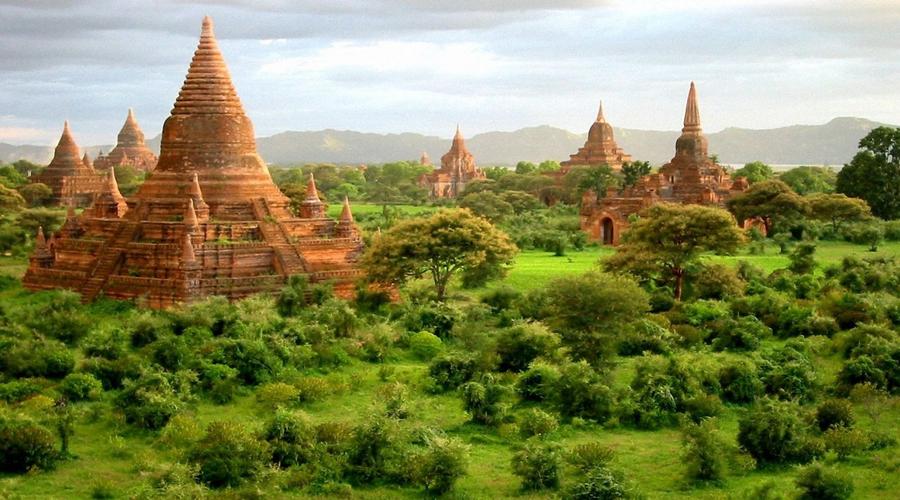
A Guide to Buddhist Spiritual Tours
Posted on April 25, 2024
A Guide to Buddhist Spiritual Tours
Embarking on a Buddhist spiritual tour offers a transformative journey, providing deep insights into the teachings of the Buddha and the rich cultural heritage of Buddhism. These tours take you to sacred sites where you can connect with the profound spirituality that has influenced millions of people over millennia. Whether you’re a seasoned practitioner or a curious traveler, a Buddhist spiritual tour is a unique opportunity to enhance your understanding and practice of mindfulness, compassion, and inner peace. This guide will help you navigate the essential aspects of planning and experiencing a Buddhist spiritual tour.
Why Choose a Buddhist Spiritual Tour?
Deepen Your Practice:
Buddhist spiritual tours provide a conducive environment for deepening your meditation and mindfulness practices. Visiting sacred sites allows you to connect with the spiritual energy of these places, enhancing your inner journey.
Historical and Cultural Immersion:
These tours offer a chance to explore the rich history and culture of Buddhism. You’ll visit ancient temples, monasteries, and stupas, gaining insights into the lives of the Buddha and his disciples.
Personal Transformation:
Many travelers find that a Buddhist spiritual tour is a catalyst for personal growth and transformation. The serene environments and spiritual teachings encountered on these tours can lead to profound changes in perspective and lifestyle.
Key Destinations for Buddhist Spiritual Tours
Bodhgaya, India:
Bodhgaya is the most sacred site in Buddhism, where Siddhartha Gautama attained enlightenment under the Bodhi Tree. The Mahabodhi Temple Complex is a UNESCO World Heritage site and a focal point for meditation and reflection.
Lumbini, Nepal:
Lumbini is the birthplace of Buddha. The site is home to the Maya Devi Temple, ancient ruins, and numerous monasteries built by Buddhist communities from around the world. It offers a peaceful setting for contemplation and pilgrimage.
Sarnath, India:
Sarnath is where Buddha gave his first sermon, teaching the Four Noble Truths and the Eightfold Path. Key sites include the Dhamek Stupa and the Ashoka Pillar, symbols of Buddha’s teachings and the spread of Buddhism.
Kushinagar, India:
Kushinagar is where Buddha attained Mahaparinirvana (final nirvana). The serene environment of this place is ideal for reflection and meditation, with significant sites like the Mahaparinirvana Temple and Ramabhar Stupa.
Rajgir and Nalanda, India:
Rajgir and Nalanda are important historical and educational centers in Buddhism. Nalanda was the site of an ancient university that was a hub of Buddhist learning. Rajgir is associated with Buddha’s teachings and the First Buddhist Council.
Planning Your Buddhist Spiritual Tour
Choose the Right Tour Operator:
Select a reputable tour operator specializing in Buddhist spiritual tours. Ensure they offer knowledgeable guides, comfortable accommodations, and a well-planned itinerary that covers the key sites.
Prepare for the Journey:
Spiritual tours often involve extensive walking and meditative practices. Prepare physically and mentally for the journey. Bring comfortable clothing, meditation supplies, and an open mind.
Engage Fully in the Experience:
Participate actively in meditation sessions, teachings, and rituals. Engage with local monks and fellow travelers to gain diverse perspectives and deeper understanding.
Respect Local Customs:
Buddhist sites are places of worship and pilgrimage. Show respect by dressing modestly, speaking softly, and following local customs and guidelines.
Making the Most of Your Buddhist Spiritual Tour
Practice Mindfulness:
Stay present and fully engaged in each moment of your tour. Mindfulness will help you absorb the spiritual significance of the sites and the teachings encountered.
Reflect and Journal:
Take time to reflect on your experiences and insights. Keeping a journal can help consolidate your thoughts and emotions, making the journey more meaningful.
Connect with Fellow Travelers:
Sharing your experiences with like-minded travelers can enhance your understanding and create lasting friendships. Engage in group discussions and activities.
Embrace the Teachings:
Apply the teachings of Buddhism in your daily life. Let the insights gained from the tour guide your actions and decisions, fostering a more mindful and compassionate way of living.
Conclusion
A Buddhist spiritual tour is more than a travel experience; it’s a journey towards inner peace and enlightenment. By visiting sacred sites, engaging in mindfulness practices, and immersing yourself in the rich cultural heritage of Buddhism, you can transform your understanding and practice of spirituality. Let Buddha Trails Tours guide you on this profound journey, providing expert guidance, comfortable accommodations, and a well-structured itinerary that ensures a deeply enriching experience. Embark on a Buddhist spiritual tour and discover the path to serenity and wisdom.
